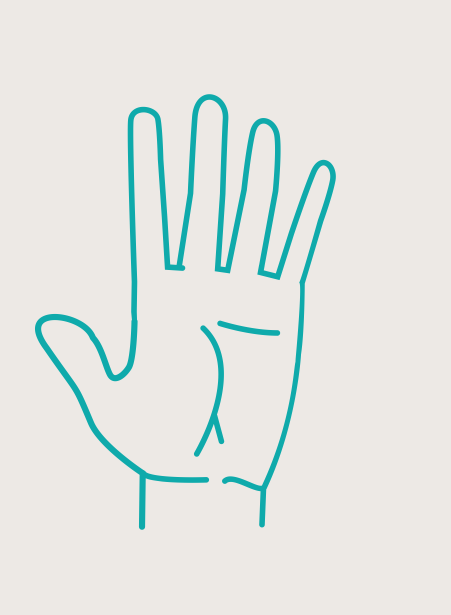New media has been described as anything that is delivered digitally to you such as emails, websites, mobiles and any internet-related form of communication[1]. However looking at this description in relation to activism and development; it is lacking some depth and concept. Some definitions of new media focus exclusively upon computer technologies while others stress the cultural forms and contexts in which technologies are used, for example, art, film, commerce, science and, above all, the Internet (Dewdney & Peter, 2006:8-9). Lev Manovich (2003:6) has a more open view to looking at new media as anything which can contain technology that enable digital generative or interactive processes such as computer games, websites, and human-computer interfaces. Social media and social networking services such as Facebook and Twitter are a good example of new media in which it promotes users’ interactions and participation. When looking at new media, activism and development, the important element here is the interactive processes and participation of users. This I feel, makes a better distinction above other digitally transmitted form of media that does not allow the users to interact such as the one-way digital television broadcasting where users can watch but not necessarily respond back interactively.
The role of information and communication technology (ICT) in fostering development of underdeveloped countries is still being debated, and it is questionable if indeed ICT do lead to development and that it led to always doing ‘good’ (Sein et al 2019). According to Avgerou (2010;2), the meaning of development is a contested notion as development policy and action are entangled with conflicting interest and power relations in contemporary global and national politics. She added that most ICTD studies avoid engaging with controversies on development and not discuss what constitutes development. However, some authors have taken critical stance to prevailing view of development that drives on the digital divide and justifies information system (IS) innovation in terms of creating a country’s competitiveness capabilities in a global free market for example (Avgerou, 2010;3).
Most traditional development paradigm is often associated with the modernization[2] theory, where developing countries are seen as not having the knowledge and resources to advance. The West is seen as the role model and in order to develop, people and nation need to be more ‘Western’. The simple idea that developing countries can copy developed countries power over technology, methods and progress and leapfrogs stages in the development process (Sein et al 2018,10)
Heeks (2017;7) theorizes ICT4D in term of a value chain because it shows that data only has developmental value if it becomes information, and information only has value if it is applied to decisions which lead to actions which lead to development results. One of the most basic concepts for understanding the world is the idea of a process: an action that takes an input and changes it into an output. On the assumption this creates value for someone, then the chain of input – process – output can be called a value chain, and fundamentally ICT involves taking action to process input to outputs and value chain can be a good way to think about ICT4D as taking input and hoping to turn them into development. Heeks elaborated that data are raw unprocessed information. Information is data that has been processed to make it useful to its recipient while knowledge is information that has been assimilated into a coherent framework of understanding, often with the human mind.
It is a value chain because data only has developmental value if it becomes information, and information only has value if it is applied to decision which leads to development result. And we can say that “one person’s information is another person’s data” (Heeks, 2017; pg.6).
Exploring further on Heeks value chain theory, I am looking at the Affordances theory as an appropriate basis to under the role of ICT in development as often ICT4D researchers lack theoretical underpinnings (Sein et. al 2018). Affordances was introduced into the field of technology to indicate how the materiality of objects favours, shapes, invites, and constraints specific use and originated from the argument that people pick up information relevant to their needs from objects within their environment. Affordances involves a network of human, social and technical objects, which in various combination enable action at different levels of granularity, therefore affordances emerge from social practises involving technology, and are related to experience, skills and cultural understandings of the user, which are relational and situated (Zheng & Yu, 2016).
[1] Southern New Hampshire University. What is New Media? https://www.snhu.edu/about-us/newsroom/2020/02/what-is-new-media accessed on 6 November 2020
[2] Modernization approaches have been one of the most influential theoretical perspectives on development since their emergence in the 1950s. Primarily attention has been focused on the ways in which past and present pre-modern societies become modern (i.e., westernized) through processes of economic growth and social, cultural, and political change.
New media and technology in relation to activism and development
The digital revolution has transformed how humanity live, work and interact with one another (O’Donnell & Sweetman, 2018). The modern society uses internet and mobile phone for nearly everything from shopping, checking up on our children, education, appointments and others. Social media platforms such as Facebook, Twitter, Whats App and the latest video-sharing social networking service, TikTok are an integrated part of our daily lives. We post our breakfast photo, what is on our mind, arrange family get-together and social media have become some sort of an unofficial memoir for many users. The internet has become a cultural form for the global population.
As part of the assignments required for NMICT4D, I wrote four interconnecting blog posts for Five4ThePeople. These blogs have an overarching theme on gender inequality and online violence. While information, communication technology for development is an exciting subject to research and the growth and uptake of information and communication technologies have the potential to improve access to information and services or enable collective action for social justice (O’Donnell & Sweetman, 2018).
My first blog entitled New Media and Technology: Does it make for a less violent society? became the basis of my research to understand new media and technology role in activism and development. It all started when I watched a Danish television programme and a statement made by a guest that society today is less violent compared to the 60’s and 70’s and everything these days are online violence and not real violence. This is where a digital television is not interactive as the program was pre-recorded and audience could not interact and participate in a debate (Marnovich, 2003) to what was the conclusion of this statement. As the internet has become the cultural form (Dewdney & Peter, 2006), I chose to write it in a blog, and solicited my audiences to leave comments on the question if they do think “We are less violent society? I received three comments, agreeing that we are not less violence, but it is a different kind of violence.
In the same blogs I discussed briefly on digital divide, in which is the inequality of access to information and communication technology. Technology mirrors the society that create it, and access to technologies is affected by intersecting spectrums of exclusion including gender, ethnicity, age, social class, geography, and disability (O’Donnell & Sweetman,2018).
If data, knowledge and information is the value chain suggested Heeks (2017), towards technology as development there is an underlying question to the use of new media and technology as development agent. Whose data, knowledge and information are online users of social media platforms basing their responses to? Data and technology are being used by activist informed by different aims and aspirations for a range of purposes, broadly in line with visions of human development. Critically, we need to recognize how digital contents affects our attitudes, beliefs, and idea (O’Donnell & Sweetman, 2018). In the post I spoke of how we quickly formed an opinion just by reading a post online, take information seen on our mobile phone news feed at face value and we decided to become a keyboard warrior engaging ourselves in online discussion with little or no understanding of the issue put forward.
Online violence and gender inequality
In my two subsequent blog posts, I wrote on how new media and technology is widening the gender inequality gap and explore the dark side of ICT4D.
In New media and technology and gendering of the social world, I reported on an online event that I attended with KVINFO. In the event, how despite that the digital world holds the potential and opportunities of popular participation and democracy and for the increase of transparency and accountability, however, the digital platforms are also the battlefield for the usual power struggle including for gender justice. Digital violence in all its form is a strategy to silence people with fear and threat and prevent them from participation. It can lead to a gender democratic deficit. Democratic deficit is defined by European Institute for Gender Equality as limited legitimacy of democracy and impact of an inadequate gender balance such as over-representation of men and under-representation of women.
Heeks (2017; 203-205) wrote while women gain more socioeconomic benefits from ICTs than men in building financial capital, skills and creating networks for safe communities, women are more likely to experience online gender-based violence (GBV) more frequently and more intensely than men.
At the event two perspectives, one from Western perspective of GBV where freedom of speech is a every citizen right and the other cases from Jordan and Egypt where a high degree of conservatism is evident due to religious influences. In Denmark, GBV was evidently more open as freedom of speech has been used a free pass to say what you want openly in social media platforms. The kind of GBV women receives has a severity from online harassment such as threat of rape and sharing of address of the victim to offline harassment such as ordering items to be delivered to someone without paying.
An Amnesty International research on women residing in Western countries showed how psychological impact on online violence have severe effect on women with 41% of respondent who have experience online violence fear for their physical safety. While men do experience online violence, the harassment tend to be group based focusing more on their nationality or race.
In a follow up blog entitled Gender and Digital Violence in transnational perspective cases from Egypt and Jordan, GBV was more apparent due to social practise in a predominantly Muslim society. Social media platform is used by women in the Arab world to push for development. In Egypt, for instance the social media photo sharing service, Instagram have been used to pushed for calling justice to sexual abuse culture. However, it was not without repercussion as those who called out on the abuser suffered victim-blaming and continue to be harassed online. In a separate case, due to use of TikTok, Egyptian female users to received jail sentence and fine for posting “inappropriate” video online, while men on the same platform have not been reprimanded.
In case of Jordan, GBV is evident in how women are blackmailed, and extortion can be carried by men on them. In a social practise where a male is regarded as a higher being and a woman is his subject, women often fall prey to opportunistic men who befriended them online and later used the messages to extort money. Although legislation exists, women seldom prosecute due to shame. In activism, while social media such as Twitter is used to promote change in legislation, male activist gets more positive comments while female activist writing on same matters receives online harassment and threats.
Looking at the affordance theory in the respect of how new media and technology is gendering the social world, it explains how social practises involving technology are relational to experience, skills and cultural understandings of the users (Zheng & Yu, 2016). In the case of Denmark (Global North), the social practise of open freedom of speech, gave online users to use blatant and direct threat to both men and women in public spheres, while in case of Egypt and Jordan (Global south) development of online social justice is a slower process as social practise is heavily overlapping between modernism and traditional religious values.
However, the dark side of social media and ICT are how gender-based violence online no matter the culture and social practises, are silencing women activist and other women who can make real change for human development from participating in the public spheres online and offline. Online violence is a real as physical violence to those who experienced it.
Conclusion
We looked at new media as a form of technology that requires participation and interactions of the users, and it further suggests that new media and technology should foster development through a specific process such as what Heeks value chain on data, knowledge and information. A well processed information should lead to development.
While new media and technology have created an opportunity for activism and development to be carried out interactively, it has also led to digital divide and gender-based violence. Western ideologies have always prevailed development practises and developing countries are often expected to copy developed countries technologies, however as pointed by affordances theory that people pick up information that is relevant to their need and when it comes to social practises involving technology it often related to experience, skills and cultural understanding of the users.
Personal reflection
Blogging has never been an interest of mine. In my line of work as a business development and operations consultant, I worked with many bloggers since 2000. I particularly do not take a liking to bloggers back then as while the writing they do was captivating, bloggers in person were less than. At events, these bloggers are often “oversold” by their writing skill and were often social introverts.
Fast forward two decades, one cannot survive in the online community without the use of social media influencers. The scene has changed a lot since with multichannel use, bloggers have a website, multiple social media platforms, multimedia channels including podcast and online private broadcasts. They are not just skillful article writers, but also are social media wizards capable of converting a post into thousands of follower in a matter of minutes, and are highly sociable individuals who lives for the “Lights, camera, action” lifestyle and being the attention at events.
It was karma that I find myself having to write blogs as part of the ComDev Master program. The past 6 weeks, I have learnt a great deal on new media and technology how it helped to propel an activism, de-platform an online community unfairly and how it helped us to continue life during the lock-down. I have learnt a great deal about WordPress, being disciplined to sticking to your writing plan and in term of progressing my learning outcome in this subject of gender equality. From my final blog New media and technology: Can it help to close the gender imbalance in social studies, I want to continue to find well-balanced articles written by both female and male researchers to widen my understanding.
Word count: 2520
References
Maung K. Sein, Devinder Thapa, Mathias Hatakka & Øystein Sæbø (2018) A holistic perspective on the theoretical foundations for ICT4D research, Information Technology for Development, 25:1, 7-25, DOI: 10.1080/02681102.2018.1503589
Dewdney, Andrew and Ride, Peter (2006). The New Media Handbook, Routledge, London retrieved from https://www.researchgate.net/publication/200026248_New_Media_Handbook
Heeks, R. (2017) Information and Communication Technology for Development (ICT4D) Taylor & Francis Group, retrieved from https://ebookcentral.proquest.com/lib/malmo/detail.action?docID=4912767
Avgerou, C. (2010) Discourse on ICT and development. Information Technologies and International Development , Vol. 6, no 3 pp 1- 18 retrieved from http://eprints.lse.ac.uk/id/eprint/35564
Yang, G. (2009) The Internet as Cultural Form: Technology and the Human Condition in China. Know Techn Pol 22, 109–115 retrieved from https://doi.org/10.1007/s12130-009-9074-z
Zheng & Yu (2016) Affordances of social media in collective action: the case of Free Lunch for Children in China retrieved from https://onlinelibrary.wiley.com/doi/epdf/10.1111/isj.12096
Amy O’Donnell & Caroline Sweetman (2018) Introduction: Gender, development and ICTs, Gender & Development, 26:2, 217-229, DOI: 10.1080/13552074.2018.1489952
Manovich, L (2003) New media from Borges to HTML retrieved from http://manovich.net/index.php/projects/new-media-from-borges-to-html


